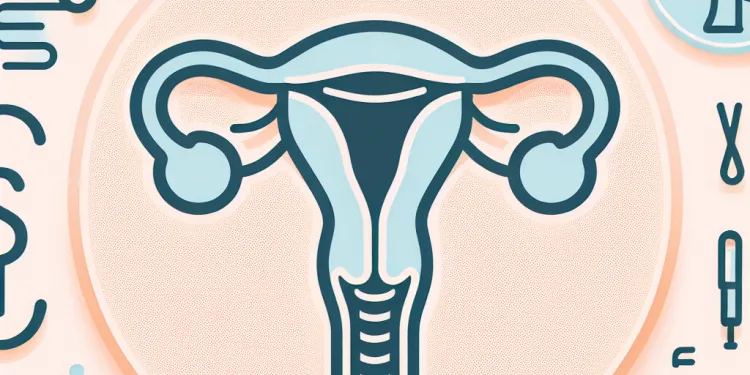
Find Help
More Items From Ergsy search
-

What is the womb lining test?
Relevance: 100%
-

What is the Womb Lining test?
Relevance: 98%
-

Is a womb lining test painful?
Relevance: 98%
-

Is the womb lining test covered by the NHS?
Relevance: 97%
-

Why is a womb lining test performed?
Relevance: 97%
-

Is the womb lining test covered by the NHS?
Relevance: 96%
-

Is the womb lining test painful?
Relevance: 95%
-

How is a womb lining test conducted?
Relevance: 94%
-

Can a womb lining test detect cancer?
Relevance: 93%
-

Are there risks associated with a womb lining test?
Relevance: 92%
-

Can a womb lining test detect cancer?
Relevance: 92%
-

How is the womb lining test performed?
Relevance: 91%
-

Are there any risks associated with the womb lining test?
Relevance: 91%
-

Why might someone need a womb lining test?
Relevance: 90%
-

Can I drive after the womb lining test?
Relevance: 87%
-

What happens after a womb lining test?
Relevance: 87%
-

How should I prepare for a womb lining test?
Relevance: 84%
-

Is there any follow-up required after a womb lining test?
Relevance: 83%
-

How long does it take to get results from a womb lining test?
Relevance: 81%
-

Does the womb lining test require any special preparation?
Relevance: 81%
-

How long does it take to get results from a womb lining test?
Relevance: 80%
-

What does an evaporation line mean on a pregnancy test?
Relevance: 51%
-

What is a lot line adjustment?
Relevance: 35%
-

Are digital pregnancy tests more accurate than non-digital tests?
Relevance: 34%
-

How does a pregnancy test work?
Relevance: 33%
-

What is a pregnancy test?
Relevance: 32%
-

What should I do if I get unclear results on a pregnancy test?
Relevance: 30%
-

When should I take a pregnancy test?
Relevance: 29%
-

What can cause a false positive pregnancy test?
Relevance: 28%
-

How long should I wait to read the results of a pregnancy test?
Relevance: 27%
-

Can a pregnancy test expire?
Relevance: 27%
-

What are the different types of pregnancy tests?
Relevance: 27%
-

What if my pregnancy test is positive?
Relevance: 26%
-

Can a pregnancy test detect a miscarriage?
Relevance: 26%
-

Rectal swab test for Gonorrhoea and Chlamydia
Relevance: 25%
-

Can drinking a lot of water affect pregnancy test results?
Relevance: 24%
-

Do all pregnancy tests detect the same levels of hCG?
Relevance: 24%
-

Is there an autism test?
Relevance: 24%
-

What is a stool DNA test?
Relevance: 24%
-

How soon can a pregnancy test detect pregnancy?
Relevance: 24%
How is a Womb Lining Test Conducted?
Introduction
A womb lining test, also known as an endometrial biopsy, is a medical procedure used to assess the endometrium's health. It is often performed to investigate abnormal uterine bleeding, fertility issues, or to screen for cancerous or precancerous conditions. Understanding the procedure can help alleviate concerns and facilitate informed decision-making.Preparation
Prior to the procedure, patients in the UK may undergo a consultation with their healthcare provider to discuss medical history and the reason for the test. It's essential to inform the doctor of any current medications, allergies, or medical conditions. A pregnancy test might be performed to ensure the patient is not pregnant, as the test is contraindicated during pregnancy.The Procedure
The test is typically conducted in a clinic or hospital. The patient will lie on an examination table, and a speculum is inserted into the vagina to allow access to the cervix. A thin, flexible tube, known as a pipelle, is then gently passed through the cervix into the uterus. The tube is used to obtain a small sample of the endometrial tissue.Post-Procedure Care
After the test, patients might experience some cramping or light bleeding, which usually subsides quickly. Over-the-counter pain relief can be taken if needed. It is generally advised to avoid using tampons and refrain from sexual intercourse for a couple of days to reduce the risk of infection.Results and Follow-Up
The tissue sample is sent to a laboratory for analysis. Results typically take a few days to weeks. The healthcare provider will discuss the results and any necessary follow-up steps with the patient. Depending on the findings, further tests or treatments might be recommended.Conclusion
A womb lining test is a straightforward procedure that offers valuable insights into the uterine health. Being informed about the process can help patients in the UK feel more comfortable and prepared, ensuring a smoother healthcare experience. It is always important to communicate openly with healthcare professionals regarding any concerns or questions.How is a Womb Lining Test Conducted?
Introduction
A womb lining test, or endometrial biopsy, is a medical test. It checks if the inside of the womb is healthy. This is important if you have unusual bleeding, problems having a baby, or to check for cancer. Knowing about the test can make it less scary.Preparation
Before the test, you will talk to a doctor. You should tell them about any medicines you take, allergies, or health problems you have. They might do a pregnancy test to make sure you are not pregnant because this test is not safe if you are pregnant.The Procedure
The test happens in a clinic or hospital. You lie down on a table. The doctor uses a tool called a speculum to gently open the vagina. They then put a thin, soft tube through the opening of the womb. This tube takes a tiny sample of the womb lining.Post-Procedure Care
After the test, you might feel some cramps or have light bleeding. This usually goes away fast. You can take pain medicine if you need it. Do not use tampons or have sex for a few days to avoid infection.Results and Follow-Up
The sample from the test goes to a lab. It can take a few days to weeks to get results. Your doctor will talk about what the results mean and what to do next. They may suggest more tests or treatment.Conclusion
A womb lining test is simple and helps check your womb’s health. Knowing what to expect can make you feel better and ready for the test. Always talk to your doctor if you have any worries or questions.Frequently Asked Questions
What is a womb lining test?
A womb lining test, also known as an endometrial biopsy, is a medical procedure used to sample a small amount of tissue from the lining of the uterus. This is done to check for abnormal cells or conditions affecting the womb lining.
Why is a womb lining test performed?
A womb lining test is often performed to investigate abnormal uterine bleeding, check for signs of endometrial hyperplasia or cancer, and assess the uterine lining in cases of infertility.
How should I prepare for a womb lining test?
Preparation for a womb lining test usually involves scheduling the procedure for a specific time in your menstrual cycle, and you may be advised to avoid using tampons or douches before the test. It is important to follow your healthcare provider’s instructions.
What happens during a womb lining test?
During the procedure, a speculum is inserted into the vagina to view the cervix. A thin tube, called a catheter, is then passed through the cervix and into the uterus to collect a tissue sample from the womb lining.
Is a womb lining test painful?
Some women may experience discomfort or cramping during the procedure. The level of pain varies among individuals, but the procedure is usually quick, lasting only a few minutes.
How long does a womb lining test take?
A womb lining test is typically a brief procedure, usually taking about 10 to 15 minutes in total.
What are the risks associated with a womb lining test?
Risks are minimal but can include light bleeding, infection, or, rarely, damage to the uterus. Your healthcare provider will discuss any potential risks with you before the procedure.
How do I get the results of a womb lining test?
Results are usually available within a week or two. Your healthcare provider will contact you to discuss the results and any necessary follow-up or treatment.
Can I drive home after a womb lining test?
Yes, most women can drive themselves home after the procedure as it is usually performed without sedation.
Should I take pain relievers before the test?
Your healthcare provider may recommend taking a mild pain reliever, such as ibuprofen, before the test to help alleviate discomfort.
Can I go back to work after a womb lining test?
Most women can return to their normal activities immediately after the test, including work, unless advised otherwise by their doctor.
Is there any specific aftercare following a womb lining test?
Aftercare usually involves monitoring for any unusual symptoms such as heavy bleeding or signs of infection. You may be advised to avoid using tampons and abstain from intercourse for a short period.
Will I have any bleeding after the test?
Light spotting or bleeding is common after a womb lining test, but it should not be heavy. If you experience heavy bleeding, contact your healthcare provider.
Who should not have a womb lining test?
A womb lining test may not be suitable for women who are pregnant or have an active pelvic infection. Your doctor will review your medical history to determine if the test is appropriate for you.
How accurate is a womb lining test?
An endometrial biopsy is generally accurate for detecting abnormal conditions affecting the womb lining, though no test is 100% accurate. Further testing or follow-up may be required depending on results.
What is a womb lining test?
A womb lining test checks the inside of the womb. The womb is where a baby grows. Doctors take a tiny piece from the womb lining to see if it is healthy.
This test helps doctors find out why some people might have problems having a baby.
Tools to help: You can ask a doctor to explain it. A family member or friend can help too.
A womb lining test is when a doctor takes a tiny piece from the inside of the womb. The womb is where a baby grows. This test checks if everything inside the womb is okay.
Why do doctors check the inside of the womb?
Doctors look at the inside of the womb to make sure it is healthy. This test helps them understand why someone might have pain or why they can't have a baby. It is like finding clues to solve a mystery about your health.
Some tools can help make reading easier:
- Use a ruler or your finger to keep your place when reading.
- Break text into smaller parts or sentences.
- Read out loud to hear the words.
- Ask someone to read with you and explain hard words.
A womb lining test is a check-up. Doctors do this test if you have strange bleeding, to look for signs of thick lining or cancer. This test also helps see why someone might have trouble having a baby.
How can I get ready for a womb lining test?
Here is how you can get ready for the test:
- Talk to your doctor. They will tell you what to do.
- You might need to stop eating or drinking for a short time.
- Ask someone to come with you to the test, if that helps you feel better.
- Write down any questions you have and bring the list with you.
These steps can make the test easier for you. You can also use a calendar or set reminders to help you remember when you need to go to the test.
Getting ready for a womb lining test means you might have to book it at a certain time in your period. You might also hear from your doctor not to use tampons or douches before the test. Make sure you listen to what the doctor says.
What happens during a womb lining test?
A doctor looks inside your womb.
They check the womb lining. This is the inside part of the womb.
They use a small tool to take a tiny piece. This does not take long.
You might feel a little bit of discomfort.
It is okay to ask for someone you trust to be with you.
If you worry, tell the doctor how you feel.
During the test, a doctor puts a special tool called a speculum into the vagina. This helps them see the cervix clearly. Then, they use a small, thin tube called a catheter. They gently put the tube through the cervix into the uterus. This helps them take a small piece of tissue from inside the womb.
If you find this hard to understand, you can ask someone you trust to read it with you. You can also use helpful tools like a dictionary or a reading app to explain words you don't know.
Does a womb lining test hurt?
A womb lining test might feel a bit uncomfortable for some people. It doesn't usually hurt a lot, but everyone is different.
Here are some things that might help:
- Take deep breaths to help you relax.
- You can ask the doctor if you can listen to music.
- If you are worried, talk to your doctor. They can help you feel better.
Some women might feel a bit of pain or cramp during the procedure. Everyone feels pain differently, but the procedure is usually quick and lasts just a few minutes.
How long does a womb lining test take?
The doctor looks inside the womb to check the lining. This is called a womb lining test. The test usually takes a few minutes. It might help to have a friend with you. Take deep breaths to stay calm. Listening to music might help too.
A womb lining test is a quick check-up. It usually takes about 10 to 15 minutes to finish.
What are the dangers of a womb lining test?
Here are some things that can happen with a womb lining test:
- You might feel some pain or cramps.
- You could have a little bleeding.
- There is a small chance of getting an infection.
If you have worries or feel unwell after the test, talk to a doctor or nurse.
Support: You can use a calendar to track how you feel after the test or ask someone you trust to go with you for support.
The risks are small. You might have a little bleeding or an infection. It is very rare, but there could be damage to the uterus. Your doctor will talk to you about these risks before the procedure.
To better understand, you can:
- Ask your doctor any questions you have.
- Read information sheets given by your doctor.
- Use pictures or diagrams to help you understand.
How can I see the results of a womb lining test?
Here is an easy way to find out your womb lining test results:
- Ask the nurse or doctor when you will get the results.
- You might get the results through a phone call.
- Sometimes, the results come in the mail. Look for a letter.
- You can ask the doctor to explain the results to you. They can help you understand.
Tools to help:
- Ask a friend or family member to go with you to the doctor. They can help you listen.
- Use a pen and paper to write down what the doctor says. It's okay to ask the doctor to speak slowly.
You will get your results in one or two weeks. Your doctor will talk to you about what the results mean and if you need any more tests or treatment.
Can I drive home after a womb lining test?
After the test, you might feel a bit uncomfortable. It is a good idea to ask someone to drive you home. You could also take a taxi or a bus.
If you have any worries, talk to your doctor or nurse. They can give you advice.
A helpful tip is to plan how you will get home before the test. This can make everything easier.
Yes, most women can drive themselves home after the procedure because they don't usually get sleepy medicine.
Can I take medicine for pain before the test?
Your doctor might tell you to take some medicine for pain, like ibuprofen, before the test. This can help you feel less uncomfortable.
Can I work after a womb lining test?
If you had a womb lining test, you might feel okay to work. But everyone is different. Listen to your body.
Sometimes it helps to rest. Maybe take the rest of the day off to feel better.
Using a planner or app can remind you to rest or take medicine if you need it.
Most women can go back to their usual things, like work, right after the test. But if the doctor says to wait, they should listen to the doctor.
What should I do after a womb lining test?
After you have had medical care, you need to look out for anything unusual. If you see lots of bleeding or feel very sick, tell a doctor. A doctor may tell you not to use tampons and to not have sex for a little while.
Will I bleed after the test?
It's normal to have a little bleeding after a womb lining test, but it should not be a lot. If you bleed a lot, call your doctor or nurse.
Who should not get a womb lining test?
A womb lining test might not be good for everyone. Talk to the doctor to see if it is right for you.
Here are some tools and tips to help understand:
- Ask a friend or family member to read with you.
- Use a drawing or picture to show what is talked about.
- Take breaks and read the text slowly.
The womb lining test might not be good for women who are pregnant or have an infection in their hips or lower tummy area. Your doctor will check your health history to see if this test is okay for you.
How accurate is a womb lining test?
A womb lining test checks the lining of a woman's womb. It helps doctors learn more about someone's health. It is very important for people who want to have a baby.
The test can show how healthy the womb lining is. This can help with finding out why someone might have trouble getting pregnant.
The test is usually good at finding problems, but it is not always perfect. Sometimes more tests are needed to be sure. It is best to talk with a doctor about what the test results mean.
If reading is difficult, you can ask someone to read this to you or use a tool that reads text out loud. It is also okay to ask questions if you do not understand something.
An endometrial biopsy is a test. It checks the inside of the womb to find problems. The test is usually right, but not always. You might need more tests or a check-up later, depending on the results.
Useful Links
- Ergsy carfully checks the information in the videos we provide here.
- Videos shown by Youtube after a video has completed, have NOT been reviewed by ERGSY.
- To view, click the arrow in centre of video.
- Most of the videos you find here will have subtitles and/or closed captions available.
- You may need to turn these on, and choose your preferred language.
- Go to the video you'd like to watch.
- If closed captions (CC) are available, settings will be visible on the bottom right of the video player.
- To turn on Captions, click settings .
- To turn off Captions, click settings again.
More Items From Ergsy search
-

What is the womb lining test?
Relevance: 100%
-

What is the Womb Lining test?
Relevance: 98%
-

Is a womb lining test painful?
Relevance: 98%
-

Is the womb lining test covered by the NHS?
Relevance: 97%
-

Why is a womb lining test performed?
Relevance: 97%
-

Is the womb lining test covered by the NHS?
Relevance: 96%
-

Is the womb lining test painful?
Relevance: 95%
-

How is a womb lining test conducted?
Relevance: 94%
-

Can a womb lining test detect cancer?
Relevance: 93%
-

Are there risks associated with a womb lining test?
Relevance: 92%
-

Can a womb lining test detect cancer?
Relevance: 92%
-

How is the womb lining test performed?
Relevance: 91%
-

Are there any risks associated with the womb lining test?
Relevance: 91%
-

Why might someone need a womb lining test?
Relevance: 90%
-

Can I drive after the womb lining test?
Relevance: 87%
-

What happens after a womb lining test?
Relevance: 87%
-

How should I prepare for a womb lining test?
Relevance: 84%
-

Is there any follow-up required after a womb lining test?
Relevance: 83%
-

How long does it take to get results from a womb lining test?
Relevance: 81%
-

Does the womb lining test require any special preparation?
Relevance: 81%
-

How long does it take to get results from a womb lining test?
Relevance: 80%
-

What does an evaporation line mean on a pregnancy test?
Relevance: 51%
-

What is a lot line adjustment?
Relevance: 35%
-

Are digital pregnancy tests more accurate than non-digital tests?
Relevance: 34%
-

How does a pregnancy test work?
Relevance: 33%
-

What is a pregnancy test?
Relevance: 32%
-

What should I do if I get unclear results on a pregnancy test?
Relevance: 30%
-

When should I take a pregnancy test?
Relevance: 29%
-

What can cause a false positive pregnancy test?
Relevance: 28%
-

How long should I wait to read the results of a pregnancy test?
Relevance: 27%
-

Can a pregnancy test expire?
Relevance: 27%
-

What are the different types of pregnancy tests?
Relevance: 27%
-

What if my pregnancy test is positive?
Relevance: 26%
-

Can a pregnancy test detect a miscarriage?
Relevance: 26%
-

Rectal swab test for Gonorrhoea and Chlamydia
Relevance: 25%
-

Can drinking a lot of water affect pregnancy test results?
Relevance: 24%
-

Do all pregnancy tests detect the same levels of hCG?
Relevance: 24%
-

Is there an autism test?
Relevance: 24%
-

What is a stool DNA test?
Relevance: 24%
-

How soon can a pregnancy test detect pregnancy?
Relevance: 24%


